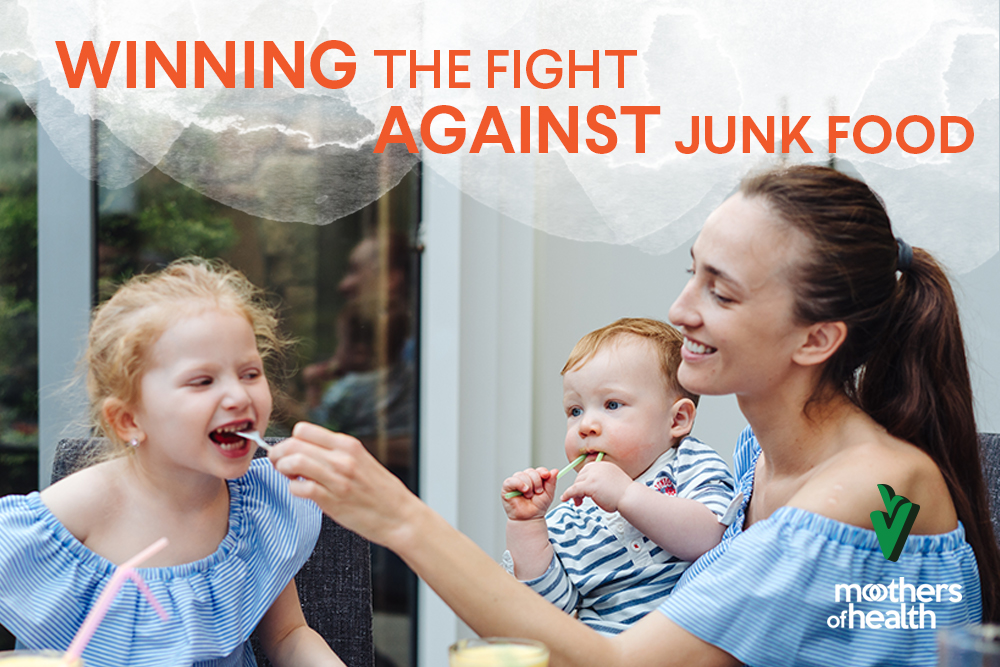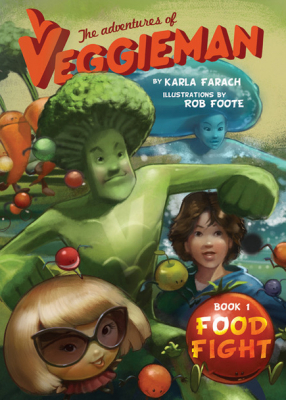
Does it seem like your kids are lost in Candy Land — the mythical world of gumdrop mountains, candy castles, and lollipop forests depicted in the beloved children’s board game? Today, sweet treats are everywhere, fast food restaurants surround many schools, and highly processed snacks fill most pantries. Our kids aren’t winning this game.
Around 16% of American children are overweight and another 20% are obese. Weight problems tend to follow kids into adulthood and increase the risk of type 2 diabetes, high blood pressure, and heart disease. No one wants that for their kids.
Physical activity is important for weight control, but growing evidence suggests that what kids eat plays an even bigger role in obesity than a sedentary lifestyle. It is essential to teach children healthy eating habits, but our efforts shouldn’t stop there. We need to change the food environment altogether so it’s easier to make healthy food choices.
Unfortunately, as a society, we’ve allowed the food environment to drift toward one that is obesogenic. Government policies often favor Big Food and Big Soda (the powerful companies that dominate those market), rather than our children’s health. As parents, it’s important to be informed about these issues and fight back.
Obesity-Promoting Food Environment
Highly processed junk foods like cheesy crackers, hot dogs, chips, sodas, sugary cereals, cookies, and candy are commonly the most widely available options our kids encounter — whether in vending machines, at extracurricular activities, and in some school meals. These unhealthy foods are loaded with highly processed oils, sugar, white flour, and sodium.
Our kids’ school food environment makes a big difference. Studies show that when schools serve more unhealthy foods or offer vending machines with junk foods, the kids tend to be heavier compared to children at schools with healthier options.
The COVID-19 pandemic has made it even more challenging to feed our school-age kids healthfully. Due to the pandemic, the USDA passed emergency waivers that weakened the nutritional requirements of the national school lunch and breakfast programs, including allowing fewer whole grains and fewer types of colorful vegetables while allowing sweetened milk and more sodium. These waivers can be used through June 2022.
The lure of advertising is another obstacle. Big Food and Big Soda spend billions of dollars every year advertising their ultra-processed junk foods. Some marketing is targeted directly to our children.
Junk food permeates television ads, online games, in-store displays, sports team sponsorships, and more. Companies are savvy about using colorful packaging, cartoon characters, and celebrities to promote their messages. Sometimes they belittle healthy foods like broccoli while they woo kids with processed foods.
Studies show this marketing works very well on kids. It influences what foods they prefer, what foods they ask their parents for, and what foods they eat. This is sneaky and shameful. Children under age 12 aren’t able to fully understand that advertisers are trying to persuade them.
If your child has ever had a meltdown in the middle of the supermarket because you wouldn’t buy the junk food with their favorite cartoon illustrated on the front package, you know what we’re talking about. Maybe you even caved in and bought the food just to pacify your child.
So, how do food companies get away with this?
Guidelines about advertising processed foods to kids under age 12 are addressed in the Children’s Food and Beverage Advertising Initiative, which is administered by the Council of Better Business Bureaus. But it’s voluntary for companies to participate, and the nutrition criteria that guide what companies can advertise aren’t stringent enough.
Food Pricing Favors Unhealthy Choices
It’s not your imagination. In some cases, it really does cost more to feed kids healthy foods. This is particularly true if you’re only considering the prices you pay at the store, rather than the potential long-term health care expenses related to eating junk food. If money is tight, this long-range view may be beyond your reach.
In one U.S. study, scientists found that healthy, perishable foods (like fruits and vegetables) cost nearly twice as much as unhealthy packaged foods (like soda, sweets, and salty snacks). On average, the cost difference was 60 cents versus 31 cents per serving of healthy versus unhealthy food, respectively. Yikes!
One reason for price discrepancies between healthy and unhealthy foods is the government’s practice of subsidizing (financially supporting) the production of crops like corn and soybeans used to make processed foods and beverages. In comparison, the production of vegetables and fruits receives less financial support from the government.
Some nutrition experts are recommending national policies, including government subsidies, to reduce fruit and vegetable prices. At the same time, they’re recommending increasing the prices of sugary beverages by imposing a “soda tax” on them, which consumers would ultimately pay for through higher prices on those drinks. A handful of American cities have already imposed soda taxes.
What would be the result of such policies?
Studies suggest a 10% decrease in the cost of fruits and vegetables could increase Americans’ intake of these healthy foods by about 14%. On the other hand, a 10% increase in the cost of sugary beverages (like sodas, sports drinks, and fruit drinks) could decrease their consumption by about 7%. Money raised by taxing sugary drinks could be used to fund subsidies to reduce the costs of fruits and vegetables. So, this approach could be a win-win for our kids.
Big Food’s Hand in Nutrition Guidelines
The voices that guide nutrition recommendations for kids are sometimes swayed by those with a vested interest in ultra-processed, packaged food sales. Big Food spends millions of dollars every year on lobbying politicians to protect its junk food empire.
Corporate Accountability (a nonprofit civic and social organization) has called out the U.S. Dietary Guidelines for Americans for being heavily influenced by junk food and beverage corporations. These guidelines influence school lunch programs and how food companies formulate their products.
The government updates the Dietary Guidelines every five years. Before the updated guidelines are released, an external scientific advisory committee meets multiple times to review the latest research. Based on their findings, the committee provides recommendations to the government agencies that write the Dietary Guidelines.
But here’s the problem: the federal agencies that write the Dietary Guidelines don’t always follow the recommendations of the scientists. For instance, when the 2020–2025 Dietary Guidelines were written, the government ignored the scientists’ advice to reduce the limit on added sugars from 10% to 6% of a person’s daily calories.
As you might imagine, groups that benefit from people eating sugar fought against that recommendation. The Sugar Association sent a lengthy letter to the government about why the daily sugar limit shouldn’t be lowered. The government used this information in its justification not to change the sugar limit.
Our kids (and all of us) are paying the price for the food industry’s heavy hand in these nutrition guidelines. But it doesn’t have to be this way. We all need to speak up.
Make Your Voice Heard
Are you ready to help shape up the obesogenic food environment and make it easier for kids to eat healthy? You don’t have to start from scratch. Many organizations have already put together resources you can use to influence policies and fight back against the junk food industry.
Here are some of the many free resources available to help you:
- Corporate Accountability provides resources for taking on Big Food, such as a letter you can send the top fast food CEO to ask him to stop marketing junk food to kids. Or, download a pledge page to stop junk food marketing at your local school.
- Real Food Media offers a toolkit to take on Big Soda. It includes resources for community events, such as activity ideas, handouts, and short film clips you can use to help inspire and mobilize others in your area to take action.
- Healthy Food America offers a sugar advocacy toolkit. It includes ideas for combating the sugar industry, such as advocating for warning labels on sweetened beverages to call out the link between obesity and sugary drinks (much like cigarette labels are required to warn of health risks of smoking tobacco).
- Center for Science in the Public Interest provides an easy online form so you can contact Congress to request a return to important school nutrition program rules that were eased during the pandemic.
- Chef Ann Foundation offers a school food advocacy toolkit that teaches how to apply for grants that provide funds for schools to start edible gardens. It also provides guidance on how to increase from-scratch cooking in schools.
We shouldn’t underestimate the impact a group of concerned citizens can make in combating childhood obesity. YOU could play an important role in transforming our “Candy Land” into “Veggie Land.”










